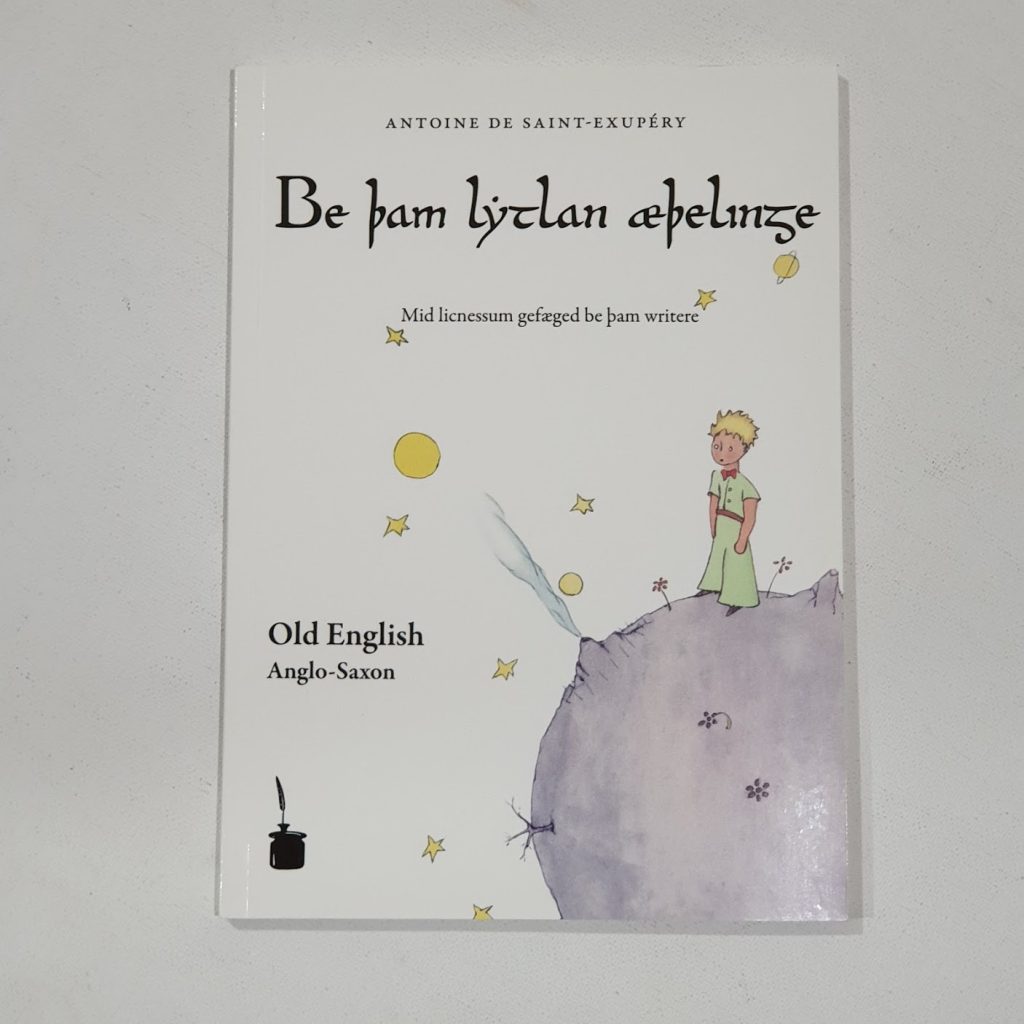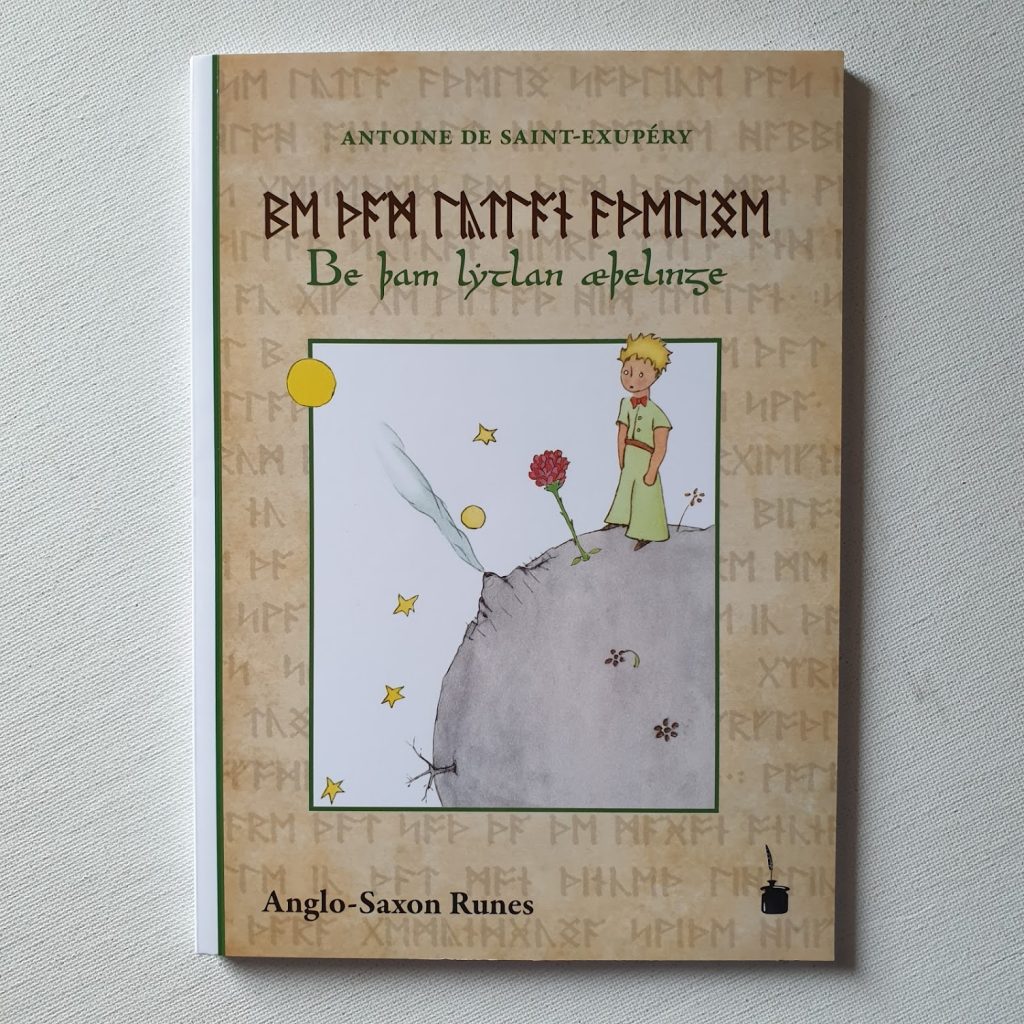
Be þam Lẏtlan Æþelinge, in Old English or Anglo-Saxon language.
Old English, also known as Anglo-Saxon, was a Germanic language spoken in England and southern and eastern Scotland. It is the earliest form of the English language and is closely related to other Germanic languages such as Old Norse and Old High German. It was brought to Great Britain by Anglo-Saxon settlers probably in the mid-5th century, and the first Old English literary works date from the mid-7th century.
Old English was written using the runic alphabet (see below) until the adoption of the Latin alphabet in the 7th century. The language underwent significant changes over time, with the influence of Latin and the arrival of the Vikings in England leading to the development of Middle English by the 11th century.
Old English has a complex grammar, with inflections for case, gender, and number. It also had a rich vocabulary, with many words borrowed from Latin and other languages, as well as words that have since fallen out of use in modern English.

Be þam Lẏtlan Æþelinge, in Anglo Saxon Runes characters
After the Norman conquest of 1066, English was replaced, for a time, as the language of the upper classes by Anglo-Norman, a relative of French. This is regarded as marking the end of the Old English era, as during this period the English language was heavily influenced by Anglo-Norman, developing into a phase known now as Middle English.


